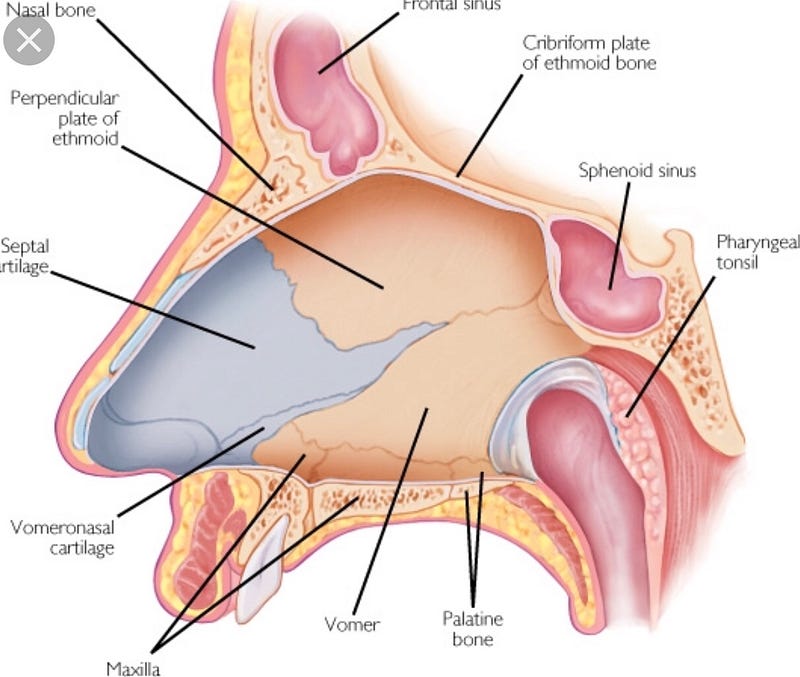Nasal septum
Many patients are somehow confused about what the septum is and what the role of it is in our nasal passages. Anatomically, the septum refers to the wall that separates the left and right sides of our nasal passages. There is mucous membrane lining over the entire septum on either side, and the center part is made from bone and cartilage.
In the human body, the nasal septum is the bone and cartilage which divides the nasal cavity of your nose in half
A nasal septal hematoma is a collection of blood within the septum of the nose. The septum is the part of the nose between the nostrils. An injury disrupts the blood vessels so that fluid and blood may collect under the lining.
Deviated septum is a condition in which the nasal septum is bent or off center, causing one nostril to be smaller than the other.
The problem is more common in children because their septums are thicker and have a more flexible lining.
the nasal septum is displaced or deviated making one nasal passage smaller than the other. If a deviated septum is severe, it can block one side of your nose and reduce airflow, causing a lot difficulty breathing.
When a deviated septum is severe, it can block one side of your nose and reduce airflow, causing difficulty breathing. The additional exposure of a deviated septum to the drying effect of airflow through the nose may sometimes contribute to crusting or bleeding in certain individuals
Symptoms
the most common signs and symptoms include:
- -Noisy breathing during sleep
- -Nose bleeds
- -Facial pain
- -Obstruction of one or both nostrils
- -The need to sleep on a particular side
- -Awareness of the nasal cycle Recurring sinus infections
You should see your doctor if you frequently have nosebleeds or sinus infections. You should also see a doctor if breathing difficulty is affecting your quality of life
Diagnosis
It is usually not easy to determine if the patient is suffering from a deviation of septum versus other reasons for nasal obstruction by external examination. Examination of the inside of the nasal passages can be done with the help of nasal endoscopy. This is the best determinant to ascertain deviation of the nasal septum. Once the diagnosis is confirmed, a decision to go ahead with the septoplasty procedure is made by the patient given the degree of blockage that they experience.
Causes
A deviated septum can be congenital. This means that a person was born with it. It can also occur as a result of an injury to the nose. People often get these injuries from contact sports, fighting, or car accidents. A deviated septum can also worsen with age.
Risk factor
The main risk factors may include:
- -Driving without wearing seat belts.
- -Playing sports without protection to the face or nose.
- -Dry Mouth.
- -Congestion of nasal passage creating pressure inside the nose.
- -Disturbed sleep or sleep apnea.
Treatment
Due to the costs, risks, or other factors, some people with a deviated septum choose not to undergo surgery. Other treatment options are available. They don’t resolve a deviated septum, but they can lessen the symptoms that accompany it.
To help with symptoms, treatment focuses on correcting that issue. Common treatments for symptoms include:
- -decongestants
- -antihistamines
- -nasal steroid spray
- -nasal strips
When to see a doctor
See your doctor if you experience:
- -A blocked nostril (or nostrils) that doesn’t respond to treatment
- -Frequent nosebleeds
- -Recurring sinus infections
Prevention
You may be able to prevent the injuries to your nose that can cause a deviated septum with these precautions:
- -Wear a helmet or a midface mask when playing contact sports, such as football and volleyball.
- -Wear a seat belt when riding in a motorized vehicle.


Comments
Post a Comment